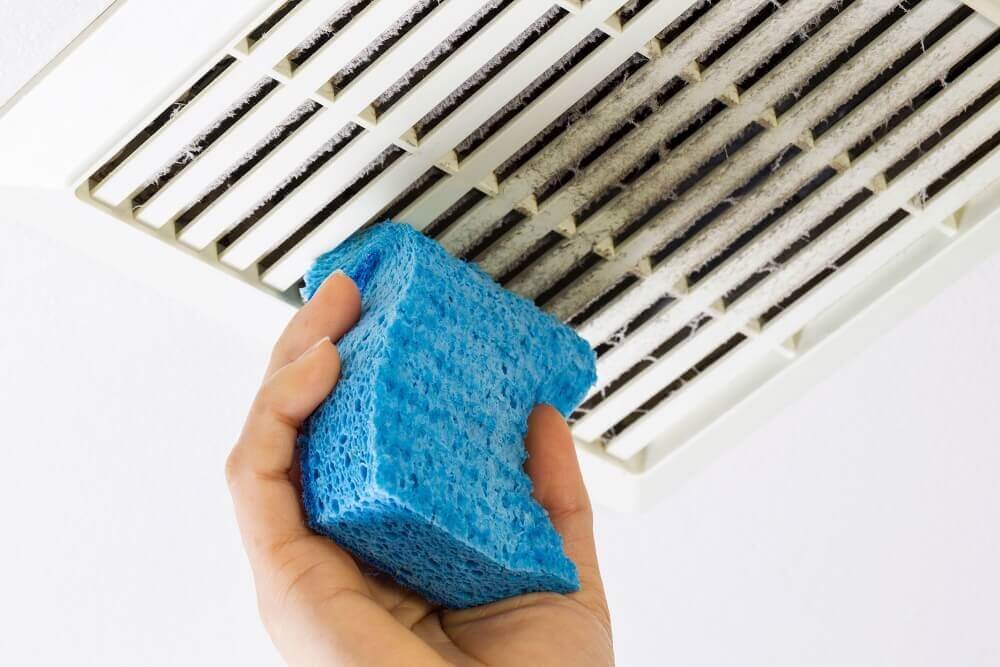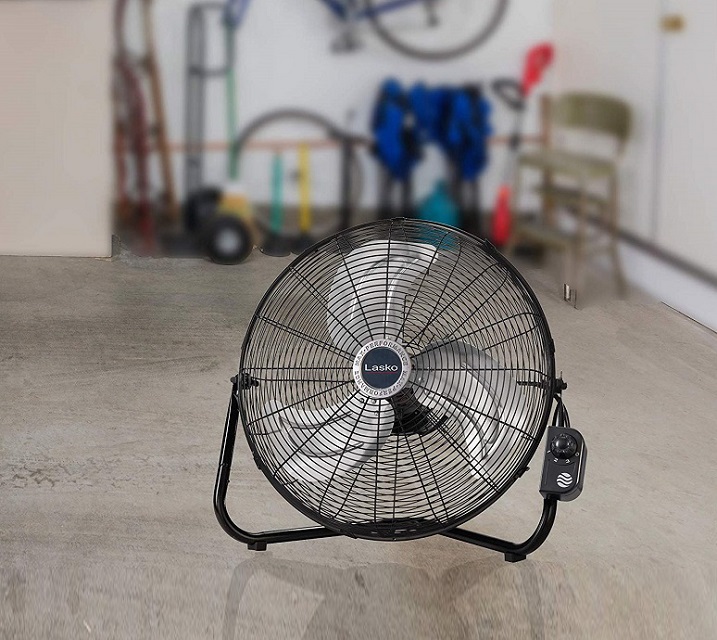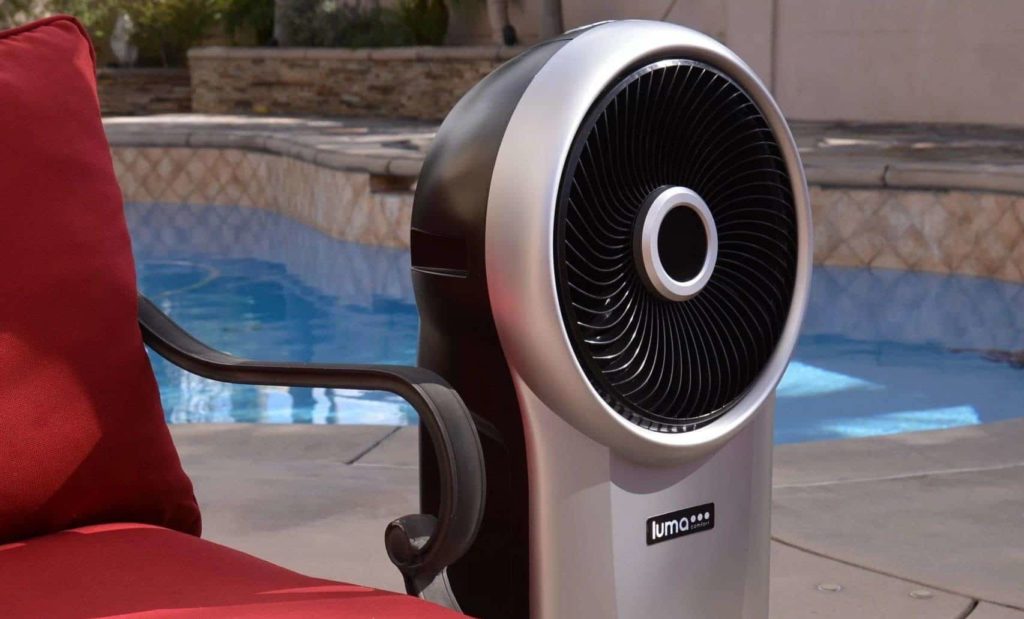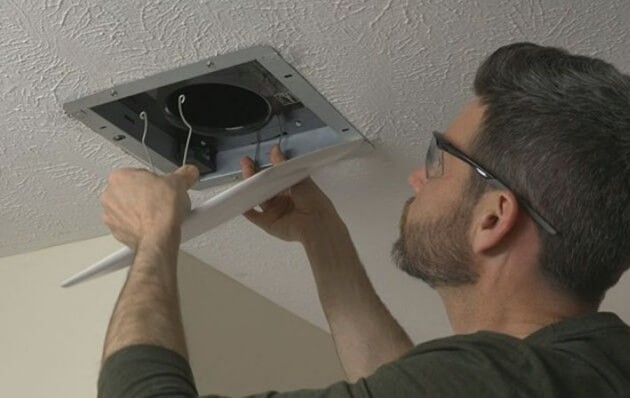

It is always a great idea to install a fan designed for the ceiling in your home to compensate for temperature rises during periods of heatwave. However, its installation must go through a few essential steps to be able to enjoy its performance under optimal conditions.
However, you don’t necessarily need to call in a specialist to help you with ceiling fan wiring. To connect it to presently available wires, ensure there is the correct fan and turn the electricity that feeds those cables off. Install the bracket on the ceiling. Then, you need to hang the ceiling fan. Once done, all you have to do is connect the wires correctly and screw the device to the ceiling.
Whether you have a fan with light, a fan with remote, with one or two switches, you’re going to be working with wire cables, including the one coming out from the ceiling. So, before embarking on this work, it is essential to cut off the power supply to the house, or at least, in the room where your appliance is installed. This will prevent you from the risk of electric shock which could cause serious injury or death.
Once electric power has been shut off from the box, you should note that, generally, cables colored in red, brown, or black are intended for phase, blue for neutral, yellow, and green for the earth. This is when you will need the clamp for the various connections. At the end of the assembly, make sure to insulate the stripped cables well and that the assembly is contained in the fixing cover.
You’ll learn more about the wires, their colors, and how to connect them in the step-by-step guide.
Installing a ceiling fan is like any other DIY activity. To complete it without difficulty, have a set of practical tools available. To get started, you will need an electrical connection. It, therefore, remains to provide an extension cord if an outlet is not located nearby.
Since you will be doing your work at height, consider bringing a ladder or stepladder. Remember that the ladder requires support to keep itself in balance and completely vertical.
When working on the fan on the ceiling, accessories such as screws, screwdriver, and wall plugs must be present. As the fan will operate under an electrical supply, be sure to keep a cable cutter with you to secure the connection of the wires. The bestselling wire cutter online is the Vise-Grip Wire Wire Cutter. This is an 8-Inch wire stripper and cutter made by DeWalt.
In short, you’ll need:
There are three phases in the wire connection process; that is, the preparation, the real wiring process, and the finishing which involves screwing the fan cover to the bracket and testing your work. A screwdriver is particularly important for this DIY task. If you don’t have one, the best for the ceiling fan installation according to electricians and DIYers is the 32500 Multi-Bit Screwdriver from Klein Tools. This is an 11-in-1 multipurpose tool with high-strength bits.
Step 1: Turn the power off
First, you have to turn off the electricity at the circuit breaker box. Observe and read the markings inside the electrical circuit box to locate the switch that is controlling the electricity that powers the fan. When you find it, turn it off. The electricity flowing through the wires of the device must be cut off otherwise you could be electrocuted.
You will normally see a table or diagram inside the breaker box showing the buttons that control the different parts of your house.
Step 2: Identify the wire that comes from the ceiling by the colors
In general, you should find at the point of installation a white wire, a yellow or green wire, and a black wire. In some cases, you will also find a blue wire, that would power the fan lamp. However, the neutral wire is the white wire, the yellow wire is grounded while the one that carries electricity to the fan is the black wire.
If there’s the black wire and a blue wire that is coming from the ceiling, you must have two switches on the wall.
Observe the wires from the fan. The device should have one green, one white, and one black wire at the top. If you have a ceiling fan equipped with a light, then you’ll find a blue wire running through. You can also find a ground, green wire connected to the bracket.
Step 1: Twist together the white wires to connect them
These are neutral cables. So connect the white ceiling wire with the one that comes from the fan.
Step 2: Connect the two green cables
Usually, you have to connect the green wire to the bracket and another to the fan. For the moment, leave the yellow or green wire that comes out of the ceiling intact.
The two green wires serve as the protective conductors and protect the fan from damage that could cause overvoltages.
Step 3: If you have one switch for light and fan, connect the blue and black wires
Join the blue and black fan wires from the fan. This allows you to be able to control both the lamp and the fan from one switch.
Step 4: Connect the green wires with the grounded wire
Take the two green wires you tied. Then connect them with the yellow or the green wire that is coming from your ceiling. The process ensures you connect the internal components of the fan to earth.
Step 5: Twist the live wires with the black ceiling wire
You must always connect the phase cables in the last position. If you have just a switch, you need to connect both the blue and the black wires which you have previously attached to the black ceiling wire. Meanwhile, if there are separate switches for light and fan, that is, more than one switch, for example, two switches, then you have to individually connect the blue and black wires coming from the ceiling fan with the same black and blue ones coming from the switches.
If your ceiling fan has no light, then you need to connect the black fan wire to the black ceiling wire.
Step 6: Replace the plastic plugs at the end of the cables
If the wires have plastic plugs, replace them. Place them on the twisted cables and twist them till they are firm. If not, cover them with insulating tape so they don’t touch each other.
Step 1: Tuck the cables into the holder
Take, bend and tuck the wires into your ceiling bracket to screw the cover to the ceiling. Ensure no cable is disconnected while doing this.
Step 2: Screw the fan cover onto the bracket
Secure this to the bracket as well as the cables, then line the holes up on the fan’s side. Take your screwdriver and tighten the screws clockwisely. Place all screws otherwise the fan will not be stable.
Step 3: Restore electricity from the circuit breaker box
After restoring electricity from the circuit breaker box, you need to test the ceiling fan. To do this, return to the electrical circuit box and turn on the appropriate switch. Then operate the wall switches to check if the fan is working properly.
Meanwhile, if the fan will not turn on, you perhaps did not properly connect the wires or there is an electrical problem. You can then switch off the fan, turn the power off again, and check the cables to see if they are connected securely.
The mode of wiring can vary from brand to brand. First, you should always check the manual provided. However, the following generally applies to some brands of the ceiling fan.
Hunter fans are generally installed by following our instructions on installing a ceiling fan, whether the one with remote control, with light, with one switch and double switches, and with pull chain. Meanwhile, you can check out the Hunter ceiling fan wiring diagram Trusted Source How to Install a Ceiling Fan
| Hunter Fan Have a new ceiling fan to install and don’t know where to begin? Learn how to install a ceiling fan from Hunter Fan with instructional videos and pictures! Our ceiling fan installation guide gives you so many tips including ceiling fan wiring. www.hunterfan.com with remote control.
Hampton Bay ceiling fans with no remote control have a simple wiring diagram. Then the black wire from the fan acts as the fan supply wire. The blue wire meanwhile is the line for light supply. You have to twist the black and blue wire together with the black house wire. Meanwhile, models with remote controls have a receiver inline. The black receiver wire will be twisted with the black fan wire while the fan’s hot white wire will be twisted with the receiver’s hot wire.
Wiring a Harbor Breeze Fan is simple. Just determine the wire connections appropriately. Identify the common and hot wires by color. The black is the hot wire for the ceiling fan, the blue is for the light while the white wire is the common wire for fan and light while the green wire is for the ground.
Below, we answer some of the most commonly asked questions about ceiling fan wiring.
You can wire a fan without switches by turning a ceiling light fixture switch to a ceiling fan switch. In this case, you can also make both the active light and the fan work on the same switch. Meanwhile, if you want to wire a fan with no switch, you can always add a remote module.
If you have a single switch for light and fan, join the blue and black fan wires of the fan. Meanwhile, if you have separate (two) switches for light and fan, you have to individually connect the blue and black wires coming from the ceiling fan with the same black and blue ones coming from the switches.
If you have separate switches for light and fan; that is, more than one switch, for example, two switches, then you have to individually connect the black and blue fan wires with the same black and blue ones coming from the ceiling.
This requires just one light switch. You can switch the hot line (white) that is going to your light kit by installing the switch. You can make the loop with a 12/2 with a ground wire. You can wrap an electrical tape (the black one) around the white wire that is exposed. To use the pull string in switching the fan on and off, you can choose to wire the fan’s motor directly to the source of power.
Connect the bare or green grounding conductors. Then connect the hot ceiling wire to the hot wire from the remote receiver module’s input side and then to the hot wire that is coming from the ceiling fan. Connect the black ceiling wire to the remote module’s input black wire. Next, connect the blue wire that is coming from the remote receiving module’s output side and to the fan’s blue wire. However, the red ceiling wire will have to be connected to your black fan wire. Then, cap off the white and black wire that is on your remote receiving module’s output side. So, when the switch is put on, your remote control will be able to control the light while the switch on the wall will be used for turning the fan off and on.
If you have existing wiring, installing the ceiling fan can cost you between $100 to 300 Trusted Source 2021 Cost to Install or Replace a Ceiling Fan - HomeAdvisor HomeAdvisor’s Ceiling Fan Installation Cost Guide gives average prices to hang a fan. Compare costs to install a fan with or without existing wiring. Find prices to replace a ceiling fan. Explore electrician labor costs for a new or replacement fan. www.homeadvisor.com , according to the Home Advisor. For designer installation, some installations can cost up to $1,400. Meanwhile, if you don’t have current wiring, one of the most recommended is the one made by popular ceiling fan manufacturer, Harbor Breeze; that is, the 54-in wire extension cord for ceiling fans.
The first thing to do to have a successful ceiling fan wiring would be to inspect the components that make up your device. To do this, check their references in the manual and make sure that each item corresponds to an illustration in the manual. But also, make sure to follow the steps explained in the instructions carefully. This way, the assembly will be carried out without a hitch. Ensure you have the appropriate tools, such as a screwdriver, to fix the motor housing.
Regarding the height, professionals recommend an elevation of about 6.5 feet from the ground. Thus, you will protect residents from possible accidents such as getting their hair caught





